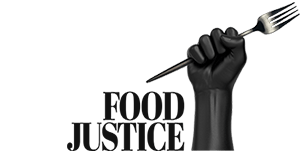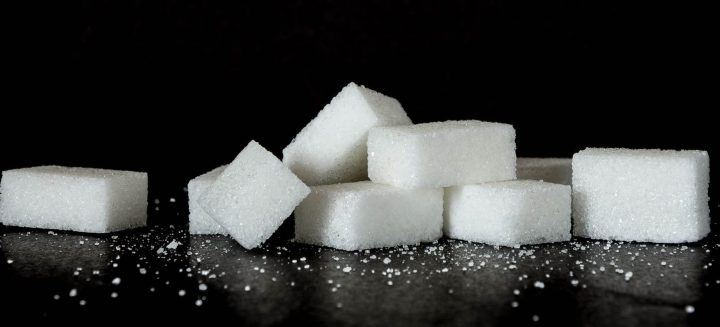
THE SUGAR SAGA (Part Four of Four)
Sugar tax and the slow crawl out of a health crisis

‘A new fight has been afoot on the global sugar stage. Its key players are the sugar industry, governments, as well as researchers and health-oriented organisations; and its consequences will no doubt affect billions.’
Click here for Part One of our ‘Sugar Saga’ series: How an obscure sugar lobbying group helped start a global health crisis.
Click here for Part Two of our ‘Sugar Saga’ series: Just how bad is sugar? The truth is bittersweet.
Click here for Part Three of our ‘Sugar Saga’ series: You’re not addicted to sugar, you’re addicted to an emotional state.
In the opening chapter of our Sugar Saga series, we took a look at the role a US sugar industry body – then known as the Sugar Research Foundation, played in the mid- to late 20th century in the promotion of sugar, by funding studies and advertising campaigns that would cast sugar in a favourable light.
Their actions would go on to influence public policy in their favour, encourage manufacturers to put more sugar in their products, and as stated by their president, Dr Henry Bohn Hass, a specialist in organic chemistry, in 1954, make sure that “people who never had a course in biochemistry are going to learn that sugar is what keeps every human being alive and with energy to face our daily problems”.
… South Africa was the first in Africa and is currently one of only 45 countries in the world that have implemented SSB taxation ….
Over the past few years, a new fight has been afoot on the global sugar stage. Its key players are the sugar industry, governments, as well as researchers and health-oriented organisations; and its consequences will no doubt affect billions. It is the fight for, or against, sugar taxation; and it is currently focused on the taxation of sugar-sweetened beverages (SSBs).
According to statistics published by the World Bank Group in September 2020 as part of their paper in favour of the taxation of sugar-sweetened beverages, “SSBs are the main source of added sugars in diets across much of the world. They account for an estimated 69% of added sugar intakes in Mexico, 39% in the United States, and 33% among UK children aged 11 to 18 years… SSBs also contribute significantly to dietary energy intakes around the world. They contribute an estimated 9–10% to total energy intakes in Mexico, 6.5% in the United States, and 6% among adolescents in Spain.”
While overconsumption of sugar may have numerous implications on the body, including cosmetic implications such as potential acne breakouts; when it comes to policy, the focus is on health and mortality. The World Health Organisation is unequivocal on the matter. In compiling its sugar intake guideline, it clearly states its objective as being “to provide recommendations on the intake of free sugars to reduce the risk of NCDs [non-communicable diseases] in adults and children, with a particular focus on the prevention and control of unhealthy weight gain and dental caries”.
The document notes that the treatment of dental diseases consumes 5–10% of healthcare budgets in industrialised countries, and would exceed the entire financial resources available for the healthcare of children in most lower-income countries. A high level of free sugars (all sugars that are naturally present or added to foods by the manufacturer, cook or consumer) is associated with poor dietary quality, obesity, and risk of non-communicable diseases, which are the world’s leading cause of death, killing “41 million people each year, equivalent to 71% of all deaths globally”. In addition to the WHO’s guides for personal sugar intake recommendation as explained in part two of our Sugar Saga series, they highlight the recommendation of 20% tax on SSBs.
As of 1 April 2018, South Africa’s SSB tax, the Health Promotion Levy (HPL), came into effect. Incidentally, that same year and month, the UK implemented its own multi-tiered version of SSB tax; but more about that later.
At 11%, South Africa’s SSB tax is well below the WHO’s recommended 20%, and it does not apply to fruit juices, which often contain the same or higher amounts of sugar as soft drinks, nor does it include other sugar-dense foods like chocolates and biscuits. As reported by Georgina Crouth for Daily Maverick after the 2021 Budget speech: “The HPL, charged on non-alcoholic sugary beverages but not fruit juices or other sweetened drinks, has remained at 11% since being introduced in 2018. The first 100ml of a sugar-sweetened beverage is exempt. After that, it is charged at a rate of 2.2c/gram of sugar. On a 355ml fizzy sugary beverage, the levy adds about 46c to the price… The levy is intended to curb sugar consumption that is fuelling what Health Minister Zweli Mkhize described before the Covid-19 lockdown as a ‘tsunami’ of non-communicable diseases such as diabetes, high blood pressure and obesity.”
Dr Evelyn Thsehla, a health policy research professional, wrote her thesis on the intersection of economics and the SSB tax. She tells Maverick Life: “The rationale for the taxation is that the increase in the price of the SSBs will deter consumers from purchasing these beverages and therefore reduce consumption. A reduced consumption will result in lower daily caloric intake and therefore lower obesity which will in turn lower incidences of Type II diabetes. Lowered incidences of type II diabetes will result in a healthy workforce which will increase productivity. Opponents of the tax have however argued that such a tax will reduce employment levels.”
The opponents she refers to on the other side of the debate include industry stakeholders, as represented by the Sugar Association of South Africa (SASA). During the proposal phase on the levy, prior to April 2018, they submitted their comments: “SASA is concerned about the increase in obesity and non-communicable diseases [NCDs] in South Africa. We are committed to working with government to address this issue. We have a longstanding commitment promoting healthy lifestyles and the prevention of NCDs. But the South African sugar industry does not support the proposed tax on sugar sweetened beverages [SSBs] and Health Promotion Levy on sugary beverages.”
They highlighted South Africa’s obesity epidemic as a complex problem that couldn’t be solved by “the singling out of an individual ingredient”. They also pointed to loss in revenue and shrinkage of the industry as a result of a potential reduction in sugar consumption; they brought up the possibility of job losses and the potential of sugarcane agricultural land going out of production; they proposed that instead of a sugar tax, “multiple, evidence-based interventions to prevent and manage obesity in South Africa should be developed, planned, budgeted and implemented. A strong campaign is needed to accurately inform and enable the public in managing their weight”.
South Africa was the first in Africa and is currently one of only 45 countries in the world that have implemented SSB taxation, which is something that public health-oriented professionals, such as the Director of PRICELESS SA (Priority Cost Effective Lessons for Systems Strengthening) at the Wits School of Public Health, Professor Karen Hofman have been pushing for. In 2015, she wrote an article titled, Obesity: why South Africans need to can soft drinks.
In it, she acknowledged the importance of policy change and the limits of personal choice. “There is an overwhelming perception that if consumers are educated, they will make good choices. But currently, food and beverage choices are shaped by availability, affordability and most importantly relentless marketing. The food and advertising environment in South Africa makes it increasingly difficult to make healthy choices… The largest soft drink bottler in the country is clear about its intentions to aggressively grow its reach within the poorest sector of the population. The growth strategy will be driven by marketing and advertising to connect particular brands with aspirations and passions. This will place an already vulnerable population at even greater risk for obesity-related diseases…The impact on children is even worse.”
Much further north of South Africa, a study was published in January 2020, titled “Reductions in sugar sales from soft drinks in the UK from 2015 to 2018”. While the tax was implemented in 2018, it was announced in 2016, and the government challenged food companies to reformulate their products to be in line with nutritional recommendations, hence the researchers were able to gauge the changes over a period of 2015 to 2018.
And they found that “action by the soft drinks industry to reduce sugar in products and change their product portfolios, coupled with changes in consumer purchasing, has led to a significant reduction in the total volume and per capita sales of sugars sold in soft drinks in the UK… Between 2015 and 2018, the volume of sugars sold per capita per day from soft drinks declined by 30%, equivalent to a reduction of 4.6 g per capita per day. The sales-weighted mean sugar content of soft drinks fell from 4.4 g/100ml in 2015 to 2.9 g/100ml in 2018”. Admittedly, a lot of this has also been replaced by artificial sweeteners, which some consider to be a health risk as well.
In Mexico, a country that had some of the highest levels of obesity as well as the accompanying non-communicable diseases, an SSB tax resulting in approximately 10% price increase was implemented back in 2014. An early study found that three years later, the tax resulted in a decrease in consumption. However, studies on how that has affected the prevalence of non-communicable diseases are yet to be published.
Back home in South Africa, having only effectively implemented the HPL three years ago, just shy of two years before a global pandemic that would turn the world upside down, it is arguably still too soon to measure its effects on the state of the nation’s health and economy.
However, in putting together her thesis, Thsehla used a “computable general equilibrium model” to investigate the impact of a 10% SSB tax on the South African economy in the short and long run. She came to the conclusion that “in the short run, the impact of the tax on GDP was lower than expected with a -0.00% change deviation from business as usual. In the long run however, the results of the SSB tax are offset by improvements in labour supply and productivity due to the decline in diabetes. Assuming less people with diabetes will lead to more people employed, household consumption increases. GDP increases by 0.02% from business as usual as a result of an increase in consumption, investments as well as the volume of exports. Assuming less health care spending by government due to reduction in diabetes, similar results are observed.” DM/ML
















 Become an Insider
Become an Insider
Mali…you have outdone yourself ! The SASSA vs SASA is like a chapter out of MAHLOBO vs the WORLD at Zondocom ! The first pays my old age pension while the second tells me to consume enough sugar to kill myself ! Maybe that way they won’t need to pay my pension anymore ? Well done !
A well written and informative series of articles. Thank you.
Very, very interesting. Thankyou. Should be compulsory reading by all schools and politicians.